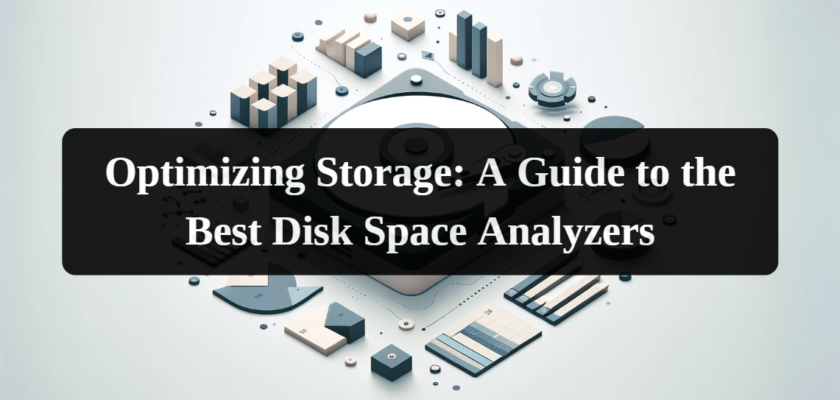As we increasingly rely on digital storage for everything from personal photos to critical business data, the efficient use of disk space becomes more important. However, keeping track of what’s consuming space on your hard drives isn’t always straightforward. This is where disk space analyzers come into play. They are tools that simplify the task of keeping an eye on your storage, making it easy to identify and manage large or unnecessary files. Instead of letting you get bogged down in the details of data management, these applications offer a clear view of your storage landscape, making it easier to keep your digital life organized and efficient.
Understanding Disk Space Analyzers:
Disk space analyzers are software tools that provide insights into how storage space is utilized on a computer or network system. These tools scan the storage drive and present data in an easy-to-understand format, usually through graphical representations like pie charts, bar graphs, and treemaps. They help identify large files, redundant data, and unused applications that might be consuming significant space. Beyond just presenting data, many analyzers offer actionable recommendations, such as deleting unnecessary files or reorganizing data. This functionality is particularly crucial as the volume of data generated and stored continues to skyrocket.
Key Features to Look For:
When selecting a disk space analyzer, certain features are particularly valuable:
- Ease of Use: The interface should be intuitive, making it simple for users of all skill levels to navigate and understand their data.
- Detailed Reporting: A good analyzer provides comprehensive reports, breaking down data usage by file type, size, and location.
- Visualization Tools: Visual aids like charts and graphs help users quickly identify which files or folders are using the most space.
- Integration with Operating Systems: The ability to integrate seamlessly with existing operating systems enhances user experience and functionality.
- Support for Various File Systems: Since different systems use different file systems, cross-compatibility is key for versatile use.
- Regular Updates: Regular software updates ensure compatibility with new storage technologies and file types.
Each of these features contributes to the overall effectiveness of a disk space analyzer, transforming data management from a tedious task into a streamlined, almost effortless process.
Top Disk Space Analyzers:
Navigating the myriad of disk space analyzers can be daunting. To simplify this, we’ve compared several popular tools, each with its unique strengths, ensuring you can make an informed decision that suits your specific needs.
- WinDirStat: Known for its straightforward approach, WinDirStat is a fan favorite for its comprehensive analysis and colorful, easy-to-read visualizations. It excels in showing file and folder sizes in proportion to their space consumption, making it simple to spot what’s taking up the most room. Its open-source nature also means a community-driven approach to improvements and updates.
- Disk Savvy: For those who need a bit more than just basic analysis, Disk Savvy offers advanced features, including various file classification options and the ability to analyze network shares and NAS storage systems. Its customizable reports are a standout, allowing for a tailored approach to data management.
- TreeSize: This tool is especially useful for users looking for a blend of power and simplicity. TreeSize provides a straightforward interface coupled with deep analysis capabilities. It integrates with Windows Explorer, making it easy to manage files directly from the analysis screen.
- SpaceSniffer: SpaceSniffer stands out with its unique treemap visualization, offering an interactive way to navigate through your file system. It’s particularly useful for those who prefer a more visual approach to data analysis, providing instant insights into file and folder sizes.
Each tool brings something different to the table – from WinDirStat’s user-friendly approach to Disk Savvy’s detailed analysis features. The choice depends largely on your specific needs, whether it’s for simple, at-a-glance data management or more complex, detailed analysis for larger networks.
Getting the Most Out of Your Disk Space Analyzer:
It’s like having a map of your hard drive; using a disk space analyzer can guide you to make informed decisions about file management. Regularly dive into these analyses to spot which areas are overly crowded and which can be trimmed down. Think of it as a periodic decluttering of your digital closet, making sure that every file and folder serves a purpose. For those in a workplace setting, these tools are akin to a resource manager, helping ensure that essential data has its rightful place without being overshadowed by unnecessary bulk.
Conclusion:
Choosing the right tool for managing disk space is like picking the right assistant for a crucial job. It’s about finding a balance between what you need and what the tool offers. Whether it’s for personal use or for managing a corporate network, the aim is to keep things organized and running smoothly.

